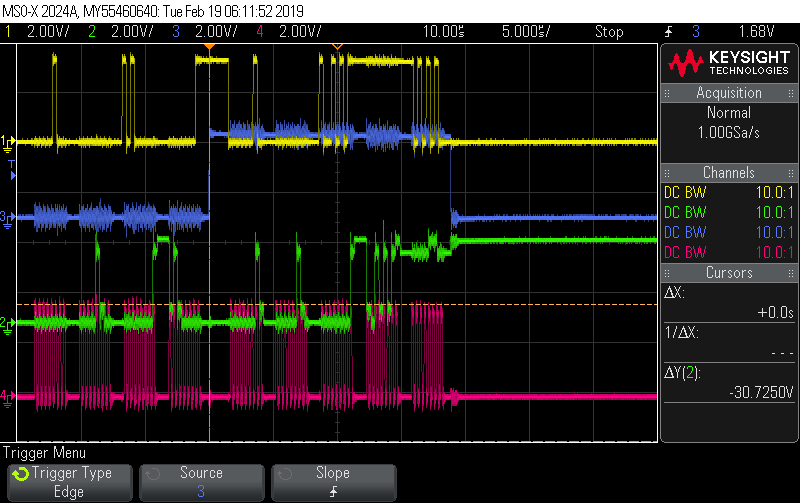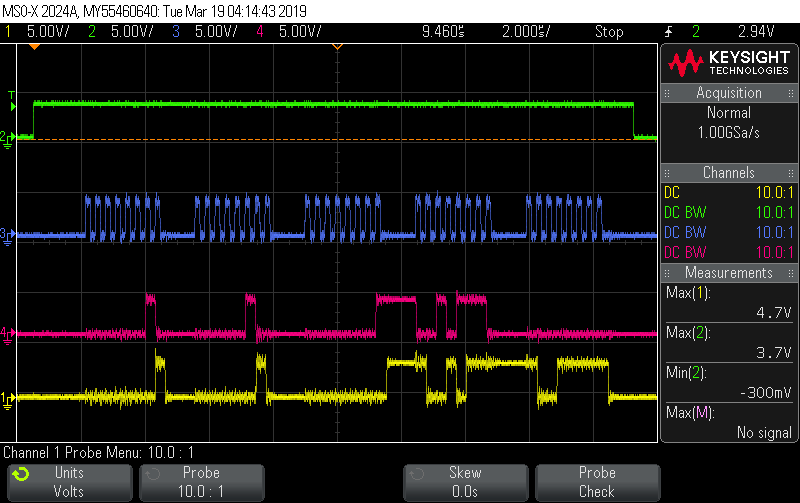Hello,
We believe we are seeing a bus contention issue using the TLC5917. Through testing, we were able to determine that the TLC5917 causes SPI bus contention and prevents the DRV9 MCU from reading data back from the CP2400 via SPI. When I scope the signal, I can see the CP2400 is trying to transmit data, but it can’t fully pull the MISO line up to 3.3V or down to ground so I either read back 0xFF or 0x00.
If we remove the IC from the board, this issue goes away. If we just disable all software control of the TLC5917, we still run into the bus contention issue.
Attached is a scope capture showing the issue. The SPI transaction with the issue is the last one in the waveform (yellow = MOSI, blue = CS of CP2400, green = MISO, pink = SCLK).
Have you run into an issue like this before? Thanks very much for your help, Keith



